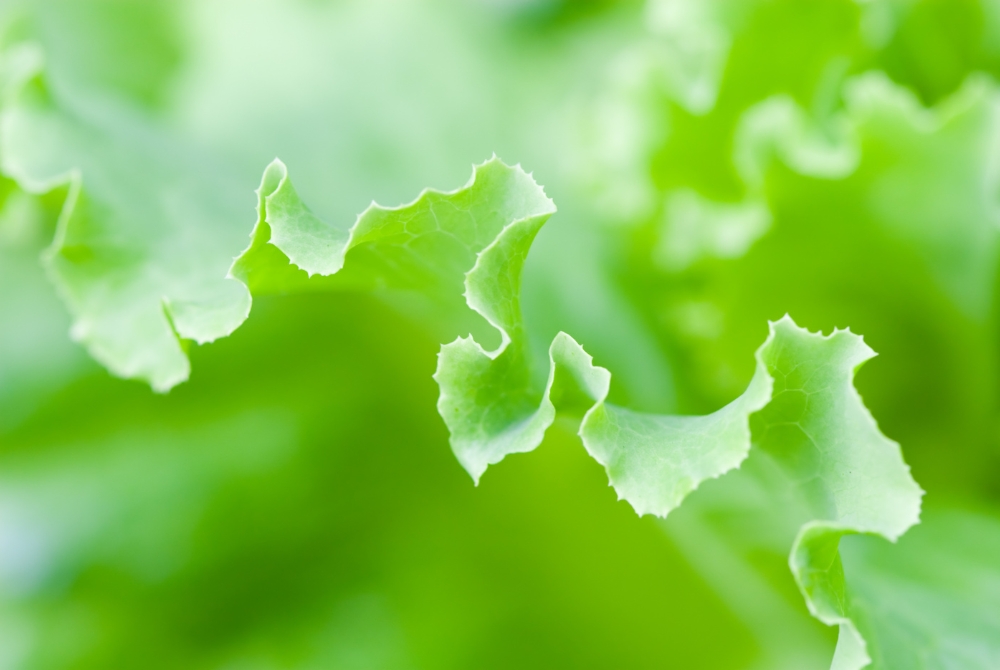Can you register a trademark for a shape if that shape defines your product? The answer, in typically maddening IP law manner, is: Yes… but it depends. And for shapes specifically, the factors are stricter than a word or logo mark.
A recent filing by the grower Little Leaf Lettuce has raised an interesting situation regarding shape trademark. They want to register a mark for the shape of their lettuce leaves – a novel request that does not garner a cut and dried answer from the USPTO.
The Little Leaf Lettuce Shape
This idea may have come from consumers of Little Leaf Lettuce. Countless social media comments about the lettuce allude to its curly nature – clearly, people are noticing.
The greens are grown hydroponically with recycled rainwater and delivered locally within 24 hours of harvest, which are already distinct marketing calls to environmental foodies. But perhaps Little Leaf is hoping to visibly denote the power of its lettuce shape – specifically, its Baby Crispy Green Leaf.
They announced the bold trademark gesture in connection with celebrating National Salad Month on their Instagram. The application is in Class 29, which covers many types of food, including meat and fish, dried and cooked fruits and vegetables, jellies, jam, eggs, milk products, and edible oils and fats.
They state that this registration is meant to cover “packaged salad kits consisting primarily of vegetables; salad kits comprised primarily of pre-cut lettuce, salad toppings consisting of cheese, croutons, tortilla strips, and salad dressing all sold together as a unit.”
It is interesting to note that they did not apply for a patent for the lettuce leaf. They did not invent the lettuce seed through plant engineering, genetic or otherwise, so patent ownership of this lettuce cultivar is not in the cards.
But they are claiming that the super curly shape of the lettuce is recognizable enough to be associated with only their brand.
Stricter Tenets for Registering a Shape Mark
This is where the USPTO needs to evaluate the essential tenets for the validity of a trademark for a shape – specifically, a 3-D product shape mark. And it is complicated by the fact that this examines the biological morphology of a living plant. That means this application will be held to a more stringent standard in these regards:
- Distinctiveness – Is the shape of this lettuce leaf unmistakable for lettuce leaves from other companies? Would a consumer recognize it as a Little Leaf product without trouble?
- Does not fulfill exclusions – Do any of these scenarios apply to the lettuce leaf? If so, these may cause the USPTO to deny the application.
- The curly lettuce shape comes from the nature of the lettuce itself (which is akin to genericness)
- The curliness is essential to the function of the lettuce
- The curliness adds substantial value to the lettuce
These raise some interesting questions, especially about what the function of lettuce is. Does it deliver nutrients through its shape? Does it deliver a pleasant eating experience to the consumer through its shape? And if these are essential functions of lettuce, does that mean Little Leaf Farms cannot register a mark for the Baby Crispy Green Leaf?
A Parade of Vegetable Trademark Applications
Answering this trademark filing will call for some astute consideration. Approval could open the door for other companies that deal in plants to assert that plant shapes have taken on a secondary connotation. In short, that is what marks come down to – they are more than the primary, literal connotation of an object. They are its symbology of source, which is highly valuable in the marketplace.
